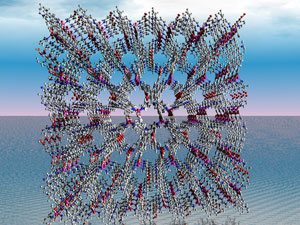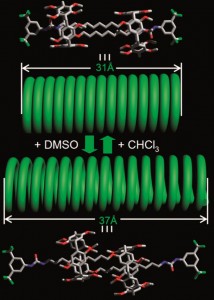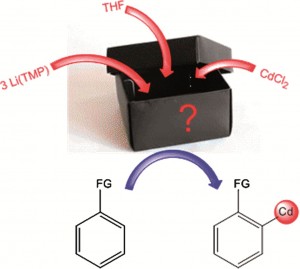This month sees the following articles in Chemical Science that are in the top ten most accessed:-
Enantioselective total synthesis of (+)-ibophyllidine via an asymmetric phosphine-catalyzed [3 + 2] annulation
Ian P. Andrews and Ohyun Kwon
Chem. Sci., 2012, Advance Article, DOI: 10.1039/C2SC20468A, Edge Article
Rethinking the Term “Pi-Stacking”
Chelsea R. Martinez and Brent L. Iverson
Chem. Sci., 2012, Advance Article, DOI: 10.1039/C2SC20045G
Towards “drug-like” indole-based transmembrane anion transporters
Stephen J. Moore, Marco Wenzel, Mark E. Light, Rebeka Morley, Samuel J. Bradberry, Patricia Gómez-Iglesias, Vanessa Soto-Cerrato, Ricardo Pérez-Tomás and Philip A. Gale
Chem. Sci., 2012,3, 2501-2509, DOI: 10.1039/C2SC20551C, Edge Article
Catalytic enantioselective carbon-carbon bond formation using cycloisomerization reactions
Iain D. G. Watson and F. Dean Toste
Chem. Sci., 2012, Advance Article, DOI: 10.1039/C2SC20542D, Minireview
Crossed Intermolecular [2+2] Cycloaddition of Styrenes by Visible Light Photocatalysis
Michael A. Ischay, Michael S. Ament and Tehshik P. Yoon
Chem. Sci., 2012, Advance Article, DOI: 10.1039/C2SC20658G, Edge Article
Copper-Catalyzed Decarboxylative Alkenylation of Sp3 C-H Bonds with Cinnamic Acids via A Radical Process
Zili Cui, Xiaojie Shang, Xiang-Feng Shao and Zhong-Quan Liu
Chem. Sci., 2012, Advance Article, DOI: 10.1039/C2SC20712E, Edge Article
A highly selective ratiometric near-infrared fluorescent cyanine sensor for cysteine with remarkable shift and its application in bioimaging
Zhiqian Guo, SeongWon Nam, Sungsu Park and Juyoung Yoon
Chem. Sci., 2012, Advance Article, DOI: 10.1039/C2SC20540H, Edge Article
Accelerated aging: a low energy, solvent-free alternative to solvothermal and mechanochemical synthesis of metal-organic materials
Matthew J. Cliffe, Cristina Mottillo, Robin S. Stein, Dejan-Krešimir Bučar and Tomislav Friščić
Chem. Sci., 2012,3, 2495-2500, DOI: 10.1039/C2SC20344H, Edge Article
Azulene-based conjugated polymers: unique seven-membered ring connectivity leading to stimuli-responsiveness
Masahito Murai, Elizabeth Amir, Roey J. Amir and Craig J. Hawker
Chem. Sci., 2012, Advance Article, DOI: 10.1039/C2SC20615C, Edge Article
Dialkylbiaryl phosphines in Pd-catalyzed amination: a user’s guide
David S. Surry and Stephen L. Buchwald
Chem. Sci., 2011,2, 27-50, DOI: 10.1039/C0SC00331J, Perspective
Why not take a look at the articles today and blog your thoughts and comments below.
Fancy submitting an article to Chemical Science? Then why not submit to us today or alternatively contact us with your suggestions.

















